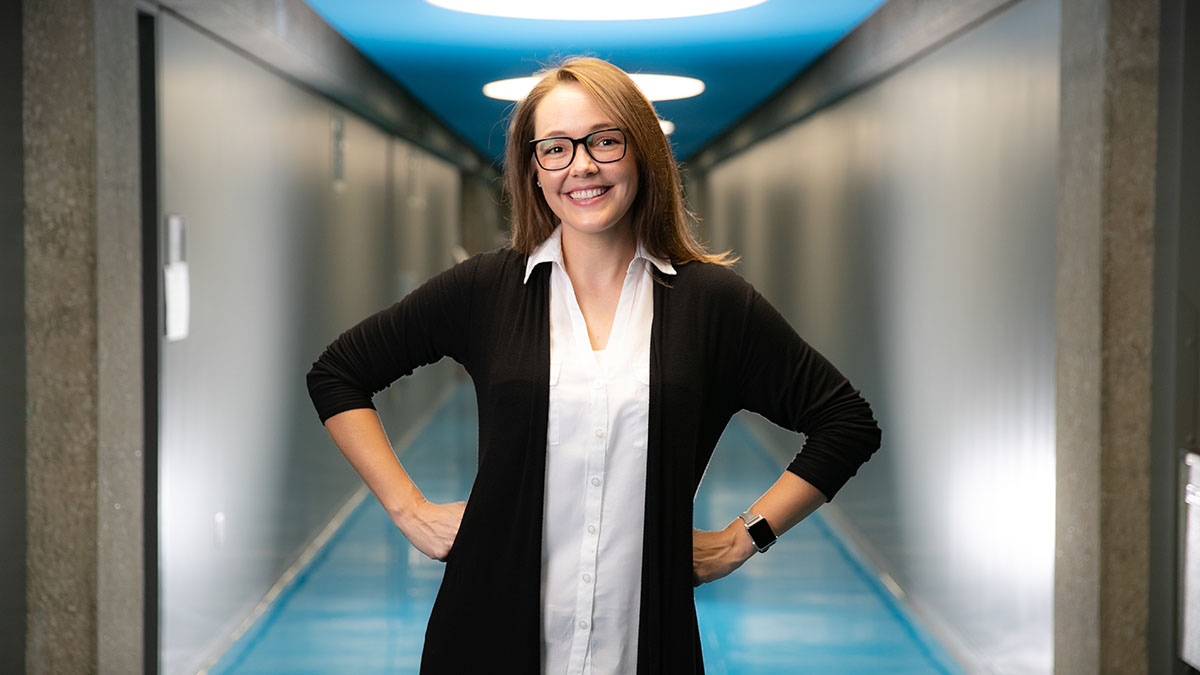
Aim for competent communication in collaboration
Dr. Carrisa Hoelscher, director of graduate communication studies at Missouri State University, sets her target on competent communication to help others improve their skills. This includes finding ways to improve both effectiveness and appropriateness.
Being effective and appropriate can feel like they are at odds sometimes. This creates tension — Hoelscher’s research area. She examines tensions in collaborative communication, like in committees within the nonprofit or governmental sector.
“Do we err on the side of appropriateness, or do we err on the side of effectiveness when communicating? That’s kind of the undercurrent of everything,” Hoelscher said. “When I’m studying small-group interaction, what I’m most interested in is the underlying tension people tend to feel but don’t have words for and what they can do to address those tensions.”
Hoelscher carved out a niche at the intersection of collaboration and tension to provide suggestions to improve communication in groups. So far, she’s co–authored a textbook, published many articles and contributed to several books. She’s always looking to produce practical lessons for application in real-life scenarios.

Collaboration comes with unique tensions. Dr. Carrisa Hoelscher studies these in hopes of improving the experience.
Working together
When grave community issues creep up, task forces with agency representatives often come together. Each offers a different perspective, set of resources and ability to address the needs.
“These agencies are trying to make the world a better place,” Hoelscher said. “We’re seeing agencies having to collaborate more — to do more with less.”
For one study, she followed an interagency group as it developed and implemented a strategic plan to address substance-abuse issues. She observed the meetings for more than three years, detecting and tracking tensions in the talk among collaborators. She also interviewed participants and collected documents to help categorize types of tensions and document the shifting meaning of these tensions for group members over time.
“We have the luxury of going for effectiveness in our own organizations. Meanwhile, almost always, in a collaboration, you have to err on the side of appropriateness, because the relationship is flat and fragile.”
As a result, she published a new article in 2019 on tensions in collaboration and is currently working on a follow-up project. This line of research outlines seven dialectical tensions collaborators may experience. It also provides a framework of best practices for managing those tensions.
“These are tensions, like autonomy and connectedness,” Hoelscher explained. “You want both. You can have both. But they feel like opposites.”
Other examples include skepticism and optimism, collaborative and competitive, creativity and parameters, necessary and palatable change, and impactful and viable change.
Hoelscher’s work helps practitioners identify the tensions in their own experiences. The work also provides practical suggestions like acknowledging the tension, delaying tension management and hedging for more appropriateness.
“The traditional tension everybody uses as an example is a romantic relationship. Almost everybody feels the tension between wanting to feel connected, but wanting to maintain autonomy and independence. We want both of those things at the same time, but they feel like opposites.”
These tactics can help people to successfully manage the uncomfortable moments and use the tension to lead to better outcomes.

Getting a seat at the table is very important. Equally important? Keeping communication open between all parties. If not, says Dr. Carrisa Hoelscher, the collaboration will fizzle.
“In collaboration, we have to care more about the end product than our own organization because we are giving up something to get there and these tensions aren’t going away,” she said.
Many times, she added, the thing being given up is time to complete other tasks.
“’Are we getting enough bang for our buck?’ so to speak. That’s a common tension in these situations,” she said. “You have to be able to answer that question for everyone at the table and give them the tools to address those commitment-based tensions.”
Tensions lead to teachable moments
Hoelscher began researching this interagency collaboration for her dissertation under Dr. Michael Kramer. He is chair of the communication department at the University of Oklahoma.
“Carrisa’s work is changing the field,” he said. “She examines the way people actually talk and work together instead of focusing on the financial and other benefits that most researchers examine.”
Hoelscher notes that collaborative tensions must be managed differently or else the partnership will fizzle.
“When it comes to the types of tensions I talk about, discomfort may be telling you to pay more attention to a part that you’ve put in the back of your mind,” she said. “I hope my research contributes to making us more comfortable with discomfort.”
- Story by Nicki Donnelson
- Photos by Kevin White


I knew you were a rock star! Congratulations! This is a great piece and I’m glad people will be introduced to you and your work. I’m honored to have been able to take one of your courses.
Love Love Love
Great job, Carissa!